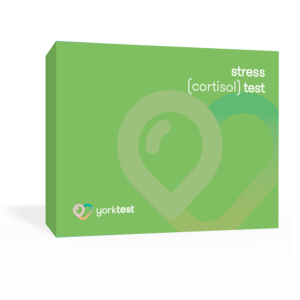- What Causes an Allergy to Pineapple?
- Pineapple and Oral Allergy Syndrome (OAS)
- How Common Are Pineapple Allergies?
- How Long Does an Allergy to Pineapple Last?
- Pineapple Allergy Symptoms & Reactions
- Cross-Reactivity When Allergic to Pineapple
- Pineapple Allergy & Latex-Fruit Syndrome
- What About Pineapple Intolerance or Sensitivity?
- Pineapple Allergy Test
- Allergy Treatment Options & Management
- Takeaway
When it comes to food allergies and sensitivities, pineapple is one of the most obscure types. This is because a true pineapple allergy is notorious for having cross-reactivity properties with other types of foods, making it especially difficult to diagnose and manage.
While pineapple allergies are relatively rare compared to other types of foods, they can cause a wide range of symptoms and reactions in affected people. Consulting an allergist is generally recommended if you suspect you’re allergic to pineapple.
For more information about the causes, symptoms, cross-reactivity, and treatment of pineapple allergy, this article provides an in-depth look at this ominous condition.
What Causes an Allergy to Pineapple?
One of the most common allergy-causing substances in pineapples is called bromelain. When someone with an allergy to pineapple (or other foods with this compound) consumes this fruit, their body interprets bromelain as a foreign invader and triggers a release of histamines in an attempt to fight it off.1 This activation of histamines can cause a host of unpleasant allergy symptoms, including hives, itching, swelling, difficulty breathing, and in some cases, anaphylaxis.
In addition to bromelain, pineapples also contain a substance called profilin. Profilin, which is also known to cause allergies in some people, is a key mediator of IgE cross-reactivity between exotic fruits like pineapple and pollen.2 This particular agent contributes to the confusing nature of such allergies and is often why someone who is allergic to pineapples may also be triggered by other cross-reactive foods and substances.
Pineapple and Oral Allergy Syndrome (OAS)
Pineapple allergies may be associated with Oral Allergy Syndrome (OAS). OAS is a unique type of allergic reaction that occurs when the proteins in certain foods are similar to those found in certain pollens.3 When these proteins come into contact with the mucous membranes in your mouth, they can cause an allergic reaction.
Symptoms of OAS are similar to most other forms of allergy, including itching, swelling, and tingling in the mouth and throat. In some cases, OAS can also cause gastrointestinal symptoms such as nausea, vomiting, and diarrhea.
There are several theories explaining why pineapple may overlap with OAS. One theory is that the proteins in pineapple are similar to the proteins in pollen, so they can trigger an allergic reaction. Another theory is that the enzymes in pineapple (e.g. bromelain) are proteolytic enzymes or proteases that resemble that of certain pollen, thereby triggering allergy symptoms.
How Common Are Pineapple Allergies?
Pineapple allergies are actually quite rare, affecting less than 1% of the global population. However, those who are allergic to pineapple can experience severe and even life-threatening allergic reactions, such as anaphylaxis or the closing of the throat.
How Long Does an Allergy to Pineapple Last?
Pineapple allergies can cause a range of symptoms, some being relatively mild and tolerable while others can be very severe and problematic. In most cases, pineapple allergy symptoms will appear within minutes or hours of exposure to the allergen. However, it can take several hours for the full spectrum of symptoms to manifest.
Mild symptoms of pineapple allergies, such as skin rashes, hives, and breakouts, can last anywhere from a couple of days to over a week. In severe cases when an allergy to pineapple lasts longer than a week, seeking medical attention is advised.
Pineapple Allergy Symptoms & Reactions
If you are allergic to pineapple, you may experience a host of pineapple allergy symptoms after eating the fruit or coming into contact with it. These symptoms and reactions can range from mild to severe, and in some cases, can even be life-threatening.
Constipation
If you have a pineapple allergy, you may experience constipation as one of your symptoms. This can be caused by the body’s reaction to the pineapple proteins, which can interfere with normal digestion.
Diarrhea
One of the most common symptoms of pineapple allergy is diarrhea, which can lead to dehydration and other serious health problems.
Flushing of the Face
Some people may experience flushing of the face, or a dramatic shift in color or redness, after consuming pineapple. Often associated with feverish symptoms, this is due to pineapple’s compound bromelain which acts as an irritant to the skin. If you experience this symptom, you should avoid consuming pineapple or any other foods that contain bromelain.
Itching or Swelling Around the Mouth or Throat
Itching or swelling around the mouth or throat is the most common Pineapple allergy symptom that can last for a few hours.
Hives or Welts on the Skin
If you come into contact with pineapple and develop hives or welts on your skin, it’s likely you’re allergic to the fruit. This reaction can occur anywhere from three hours to a few days after contact, and symptoms can last one to three weeks.
Red, Watery Eyes
Allergy symptoms to pineapple can cause red, watery eyes in some individuals. This is largely attributed to the bromelain found in pineapple, which has been shown to irritate the eyes.
Severe Symptoms
In more severe cases, a pineapple allergy can cause anaphylaxis. This is a potentially life-threatening reaction that can occur within minutes of exposure to the allergen. Symptoms of anaphylaxis include:
- Difficulty breathing
- Swelling of the throat or tongue
- Wheezing
- Confusion and anxiety
- Dizziness
- Lightheadedness
- Loss of consciousness
- Rapid heartbeat
Cross-Reactivity When Allergic to Pineapple
If you are allergic to pineapple, you may also be allergic to other fruits in the same family. This is due to an occurrence known as cross-reactivity. Cross-reactivity occurs when your body interprets one substance for another. In this case, your body sees the proteins in other fruits for the proteins in pineapple. As a result, you may have an allergic reaction to these other fruits even though you are not actually allergic to them.
The good news is that cross-reactivity is usually not as severe. You may only experience mild symptoms, such as itching or hives. In rare cases, however, pineapple allergy cross-reactivity can lead to a life-threatening reaction known as anaphylaxis. If you experience any symptoms of anaphylaxis, such as difficulty breathing or swelling of the face, you should seek medical attention immediately.
The fruits that are known to cross-react with pineapple include apricot, avocado, banana, cherry, chestnut, grape, kiwi, papaya, passion fruit, and peaches. If you are allergic to pineapple, it is best to avoid or closely monitor your consumption of these other fruits as well.
Pineapple Allergy & Latex-Fruit Syndrome
If you have a pineapple allergy, it may be due to the latex present in the fruit. This is known as latex-fruit syndrome and it’s also the primary reason why pineapple has so many cross-reactive foods that produce similar allergy symptoms.4
Some of the other fruits associated with the latex-fruit syndrome are kiwi, mangoes, passion fruits, figs, avocados, bananas, chestnuts, soy, and strawberries. So if you are allergic to pineapples, there is a greater likelihood that you may be allergic to some of these other fruits.
Symptoms of this particular syndrome often include itching, swelling, and difficulty breathing. If you experience these symptoms after eating pineapple, it’s important to get tested or consult a qualified physician or allergist for diagnosis and treatment.
What About Pineapple Intolerance or Sensitivity?
If you have stomach discomfort or mild symptoms after consuming or coming into contact with pineapple, it may be due to food intolerance. This is very different from a food allergy from a biological perspective, as an allergy is a specific IgE immune system response. With an intolerance or a sensitivity which can include a specific IgG response, the symptoms can be digestive, skin, headaches, low mood or low energy and can develop over several hours after eating pineapple.
Common symptoms of pineapple intolerance or sensitivity include stomach pain, nausea, heartburn, diarrhea, headaches, and low energy. If you experience any of these symptoms after eating pineapple, it’s best to avoid the fruit or limit your consumption. Using a lab accredited test kit can identify pineapple sensitivity. [DGH1]
Pineapple Allergy Test
A skin prick test is one of the most common and effective ways to test for pineapple allergy. A needle is used to prick the skin, and then a drop of pineapple juice is placed on the skin. If you are allergic to pineapple, you will develop a red, itchy bump at the site within minutes.
The pineapple allergy IgE blood test is another simple and quick way to test for an allergy to pineapple. This test measures the amount of allergen-specific IgE antibodies in the blood and can be used to confirm an allergy or help rule one out. You can have this pineapple allergy test done in a clinical setting or by using a lab-accredited allergy test which can be done at home and mailed in.
Allergy Treatment Options & Management
There are several treatment options for pineapple allergies, including the use of antihistamines, corticosteroids, etc. Let’s discuss all the treatment options in detail.
Antihistamines
Antihistamines can help relieve the symptoms of pineapple allergy by blocking the action of histamine, a substance that is released by the body in response to an allergy trigger. There are many different types of antihistamines available over the counter or on prescription. Some common examples include Cetirizine, Loratadine, and Diphenhydramine.
Topical Steroids
Topical steroids, which are available as creams, ointments, or solutions, work by reducing inflammation and swelling. The most appropriate type will be determined by the severity of the allergic reaction. For mild reactions, a low-potency steroid may be sufficient. For more severe reactions, a higher-potency steroid may be necessary.
Epinephrine
Epinephrine is the treatment of choice for severe pineapple allergy reactions. If you have a severe reaction, you will need to be injected with epinephrine and then taken to the hospital for further treatment. Epinephrine works by alleviating the symptoms of anaphylaxis, including difficulty breathing and nausea. It is important to keep your epinephrine auto-injector with you at all times in case of a severe reaction.
Calamine Lotion
Calamine lotion can be used to relieve itch and skin rash caused by pineapple allergy. This popular topical cream works by forming a barrier on the skin’s surface, protecting it from irritants. It also has a cooling effect that helps to soothe the itching sensation.
Corticosteroids
Corticosteroids are a type of medication that can help to reduce inflammation in the lungs and airways. This can make it easier for you to breathe and prevent an asthma attack from occurring. If you’re allergic to pineapple and have asthma, your physician may prescribe a corticosteroid inhaler or nebulizer solution for you to use in case of an emergency.
Bronchodilators
Bronchodilators are a type of medication that can help relieve symptoms of asthma caused by pineapple allergy by opening up the airways. There are many different types of bronchodilators available, so your physician will work with you to find the one that’s best for you.
Ketotifen
Ketotifen is an effective medication for treating allergic conjunctivitis (eye inflammation) caused by pineapple allergy. This medicine works by blocking the action of histamine, a substance in the body that causes allergic symptoms. Ketotifen is available in the form of a solution and is usually used twice daily.
Olopatadine
Olopatadine is an antihistamine that is used to treat allergic conjunctivitis. It works by blocking the action of histamine, which reduces the symptoms of allergy. Olopatadine is available as an eye drop and should be used as directed by your physician.
Levocabastine
Levocabastine works by blocking the action of histamine, which is a substance that your body produces in response to an allergen. This prevents the symptoms of allergic conjunctivitis, such as itching, redness, and watering eyes. Levocabastine is available in the form of a solution.
Desensitization Treatment
Desensitization treatment, also known as allergy shots, is a form of long-term immunotherapy. It involves receiving regular injections of small amounts of the allergen you’re sensitive to, such as pineapple. Over time, this helps your body build up a tolerance to the allergen and reduces your symptoms.
Allergy shots are usually given once per week for several months, and then the frequency is gradually decreased over the next few years. The entire process of desensitization can take anywhere between 3 to 5 years.
Takeaway
Imagine spending your life avoiding one of the most popular fruits in the world. That’s the reality for those with a pineapple allergy. While rare, this allergy can cause serious symptoms that can be highly detrimental to an individual’s well-being.
If you think you may be sensitive to pineapple, it’s important to seek medical advice or get tested. One solution is an at-home test kit that looks at pineapple sensitivity from YorkTest. Alternatively, an allergist can perform skin prick tests or blood tests to determine whether you’re allergic to pineapple.
If you’re found to be allergic, an experienced medical professional can provide you with guidance on how to avoid pineapple, its cross-reactive foods, and manage your allergy symptoms. With proper management, you can enjoy a safe and healthy life despite your allergy.
References:
1. Baur, X, and G Fruhmann. “Allergic reactions, including asthma, to the pineapple protease bromelain following occupational exposure.†Clinical allergy vol. 9,5 (1979): 443-50. doi:10.1111/j.1365-2222.1979.tb02507.x
2. Reindl, J et al. “IgE reactivity to profilin in pollen-sensitized subjects with adverse reactions to banana and pineapple.†International archives of allergy and immunology vol. 128,2 (2002): 105-14. doi:10.1159/000059400
3. Zaimat Beiro, Mina Dimova, Ves Dimov, “A sweet revenge”: Pineapple-related adverse food reactions, Journal of Allergy and Clinical Immunology, Volume 147, Issue 2, Supplement, 2021, Page AB98, ISSN 0091-6749 https://doi.org/10.1016/j.jaci.2020.12.370
4. Brehler, R et al. “Latex-fruit syndrome”: frequency of cross-reacting IgE antibodies.†Allergy vol. 52,4 (1997): 404-10. doi:10.1111/j.1398-9995.1997.tb01019.x













